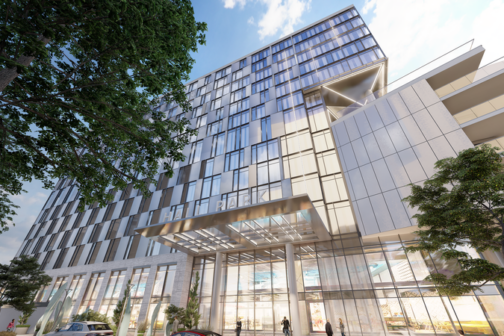Chances are, most of the ideas you have about living in a retirement community are outdated, even if you have visited one in the last few years. The face of senior living has changed dramatically during the past decade, with the last two years post-pandemic driving the most change. Retirement communities throughout the Dallas area can quickly bring you up to speed on what senior living looks like today. These communities are modern examples of what’s new and next. Daily happy hours, a 24/7 concierge, pickleball, community interaction via apps, restaurant-style dining, spa services, wine programs and wine-pairing dinners, premier fitness centers, continuing education opportunities—these communities have it all.
Consumer demand has prompted retirement communities throughout the Dallas area to reconsider what retirement living can, and should, be. Today’s seniors who are transitioning from their longtime homes to retirement communities want their move to feel like a lifestyle upgrade—something that mimics the resorts where they vacation. Retired seniors want to continue with their lives as usual—just without the hassles of home ownership.
“We plan for buying a house, college, weddings, and funerals, but sometimes, planning for retirement doesn’t make the list. Retirement should be high on that list.”
Patty Sullivan, CC Young
Approximately 52 million people in the United States are age 65 or older, according to the U.S. Census Bureau. By 2060, this demographic is projected to double in size. This means one in five people will be senior citizens who may be looking for a retirement community to call home. Because of improved medical care and adopting healthier lifestyles, people are living longer. But there is a challenge that accompanies this good news, which is finding the perfect time to make a move. While many seniors are open to the idea of moving to a retirement community, they will do so with one non-negotiable request—the senior living community they choose cannot resemble that of their grandparents or parents.
“Today’s seniors want flexibility and customizable amenities,” says Tim Mallad, chief executive officer with Forefront Living, which includes Presbyterian Village North. “Years ago, seniors entered into a fixed contract that stated how many meals they get a day, how often housekeeping comes, and the level of care they receive. Today’s seniors have upended that and are choosing what they want based on everything from their individual preferences to finances. Not much is standardized anymore. There is an optimism and energy in retirement living that we haven’t seen in a long time. After the pandemic, we are seeing a greater desire for seniors to participate and get together, and more retirement communities are responding to that.”
John Falldine, executive director of Edgemere, says the senior living communities of today are vastly different from how they operated even five years ago. With individuals living longer, there is tremendous emphasis on wellness and overall well-being across physical, mental, and social perspectives, he says. “The programming employed by a majority of communities includes a wide range of activities to maintain connection to others and engagement,” Falldine says.” There’s also a higher use of technology being used to assess things like fall risk and helping improve balance and increase mobility.”
Technology
Chad Hubbard, executive director of the Preston of the Park Cities, says Baby Boomers have been the change-makers in the retirement living industry. They are either beginning to shop for or move into retirement communities and want to do more than just live there—they want to experience and enhanced lifestyle there. “We think beyond what a traditional retirement community looks like to reimagine a better lifestyle for our members,” Hubbard says. “We are constantly reinventing outdated stereotypes by bringing cutting-edge programming and continued education. For example, Watermark University recently offered a cryptocurrency and scam awareness course, and members of the Preston at the Park Cities have access to EngageVR, a virtual reality program that potentially decreases loneliness and can ease chronic pain.”
Upgrading and incorporating technology has been a significant enhancement in local retirement community offerings. “If the technology curve left seniors behind before the pandemic, they are now up to date,” Mallad says. “Many have embraced the use of apps for instant communication within their communities, and they expect and rely upon that. It has expanded their world.”
Carlene Motto, chief marketing officer for Belmont Village Senior Living, says residents have enjoyed telehealth and telemedicine options so they can communicate with their doctors without leaving the comfort of their homes. Alyssa Adam, chief marketing officer for The Legacy Senior Communities, says technology has been beneficial to the residents but also to the community as a whole. The Legacy Senior Communities has partnered with Toi Labs in a pilot program of the TrueLoo smart toilet seat. The community has had the toilets for more than a year now and is expanding the partnership. The smart toilet offers a new level of monitoring by automating the currently manual process of tracking bowel movements and urinations in the privacy of the resident’s home. TrueLoo has been shown to be 100 times more accurate and timely than the traditional manual practice used before. “It solves a dignity issue,” Adam says. “And our staff is able to pick up on potential issues that could be commonly missed before. The information is digitally encrypted and sent to the resident’s care team.” The Legacy has also incorporated the Tapestry program for chronic care management primarily used for skilled nursing care patients. “The program works somewhat like a search engine looking for key words, but in nurse notes,” Adam says. “It provides one more layer to our care to help us detect who may most at risk for falls or rebound visits to the hospital.”
Amenities
Upgraded amenities are another reason more seniors are making the move from their longtime homes to retirement communities. In addition to being relieved of the burdens of homeownership—lawn care, maintenance, and daily cooking and cleaning—there is also a lot of fun to be had. Fitness classes, continuing education opportunities, and a wide array of trips and activities are a few examples. Highland Springs, an Erickson community, places a strong focus on overall wellness and now offers an the latest equipment in its fitness center, disc golf, a golf simulator, an outdoor meditation space, and coming soon—an outdoor labyrinth. “We have a minimum age of 62 here, so we are seeing a growing population of younger residents,” says Christina Christie, director of sales for Highland Springs. “Some folks are looking in their 50s and going ahead and putting their names on a priority list because they see the benefits and know where they want to be.”
CC Young, a continuing care retirement community near White Rock Lake in East Dallas, invites the general public to participate in many of its on-site programs and amenities. “Life enrichment programs at our on-site, non-residential building called The Point, offer an extensive array of programming and events for seniors ages 55 and better,” says Russell Crews, CC Young’s CEO. “Senior adults don’t have to live at CC Young to take advantage of our programs. They can come and experience some programming for no charge. Or, for a nominal annual fee, they can become a Point Member and experience all our programming–even outpatient therapy and aquatics—just like our residents.”
Premier dining still makes the top of the checklist when seniors are shopping for a retirement community. They are looking for options they have become familiar with that are designed much like the restaurants they frequent, and they want extended hours of operation and a variety of cuisines. Many communities have multiple dining venues ranging from grab-and-go casual cafés and delivery options, to more formal seated options, coffee shops, and pubs. Most offer gourmet fare and have a chef who prepares new menu items each day. Eric Benson, vice president of sales for Anthology Senior Living, says it’s important for communities to offer a regionalized menu and lots of options. Some senior living communities have locations throughout the country; Anthology currently owns and operates 32 with seven communities under development. “We have our corporate standards for menu offerings, but we know our residents in Texas will want options with a regional flare,” he says. “We also place a priority on getting our residents out into the community, partnering with local businesses for new opportunities, and we ask our residents to guide the direction about the activities we offer.”
Sometimes the input from seniors is a request for convenience and luxury. This is the time to sit back and enjoy. “Providing our members with services like a 24/7 concierge and support staff, on-site spa, housekeeping, and dry cleaning ensures they can focus on enjoying their retirement and feeling at home,” Hubbard says. For example, The Preston of Park Cities hosts quarterly wine pairing dinners where members and their families can enjoy fine dining served with wines from the on-site wine cellar expertly paired by the on-staff sommelier. And if members prefer something stronger, Hubbard says it’s not uncommon for the host to break out the top-tier bourbon for tastings and food pairings as well.
Choosing a Retirement Community
When it comes to retirement living, it’s nice to know there are many options, but this is also the reason the search for the right community can become overwhelming. Various pricing structures, choosing between a for-profit or not-for-profit community, and a mix of care levels all play a role in finding the best fit. A community that has a balance between the healthcare component and hospitality is key.
Adam recommends considering planning for retirement living long before you need it—as early as age 55. This way, there is still time to make some financial modifications if needed. It’s also a good time to put wills and advanced directives in order. “It’s not a fun conversation to bring up, but it’s important,” she says. “Learn about the difference between independent living, assisted living, and long-term care. Start learning about Medicare eligibility and enrollment. Look at home values in your area and begin thinking about where you want to live after you sell your home. Plan now so you will be ready once it’s time to choose.”
Mallad says most older adults will begin to notice changes both mentally and physically that indicate when it is time to make the move. He advises to look 10 years ahead and plan as early as you can. “At some point, the house and stuff inside it becomes the enemy,” he says. “They become a weight rather than something that feels like a support for you. Freeing yourself from this can be very liberating so you can embrace a new lifestyle.”
Visit retirement communities at off hours and spend time researching online about what others have said about the community. Ask to speak to current residents or their family members. Have a meal at the community. Stay a while and try to experience as much as you can. Also, ask about the tenure of the staff and their career experience. A community may have a chef-driven restaurant or the latest technology available, but if the staff is unhappy and the community experiences high turnover among staff and management, it could be a sign to consider another option.
Motto says the most important things to motice when touring a retirement community are the culture and understanding the level of care, such as 24-hour nursing care for peace of mind. “What is their mission? Look at the residents and the staff. Are they smiling, happy, and engaged with each other? Do you see people out and about enjoying the community? These are things to take note of,” she says.
Take time to inquire and learn about the community’s business models. Most communities fall into two categories—for profit and not-for-profit. How you will pay for your new home will also vary from community to community. “Always ask who owns the property, or who is charge of the destiny of this community,” Mallad says. When shopping around for a retirement community, keep in mind there are a variety of contract and payment options to meet different financial and care needs. Some require an entry fee similar to a down payment on a home. In addition to this fee, a monthly fee is required that may cover a certain number of meals, light housekeeping, and other amenities. When the home is no longer needed, the community issues a refund on the entry fee to the senior or his or her estate, usually about 90 percent of the initial payment. Another common option is a monthly rental, like an apartment lease, where the fee may cover dining, some level of care, and other amenities.
While it’s tempting to stay as long as possible in your home and keep your daily routine, it may not be the healthiest or safest option. Whether for you or a loved one, start paying attention to the signs that it may be time to consider a move and begin shopping retirement communities. “The ability to remain at home until end of life isn’t always an option for everyone,” Motto says. “Research your options. Educate yourself. Don’t wait until a crisis occurs to make your decision.”
From Wills to Handyman Services, Help for Seniors is Here
Community Council of Greater Dallas provides leadership in moving individuals and families, including area seniors, from surviving to thriving. Dallas Area Agency on Aging is a program of Community Council. Through this program, Community Council provides direct services and partners with other organizations to address the needs of older adults in Dallas. The organization provides temporary services and connections to other resources for short- and long-term support. The mission is to make sure every senior who lives at home is secure, safe, and healthy. Assistance with rent, mortgage, utilities is available as well as legal assistance services to help with wills, power of attorney, and consumer issues that affect older adults. DAAA also provides assistance for caregivers with respite services. This program provides temporary relief for caregivers who are taking care of their loved ones.
In addition, Community Council of Greater Dallas offers unbiased Medicare benefits counseling for all seniors. “It’s a great starting place for people who are getting close to age 65 to help them understand what Medicare Part A, B, and D and Medicare Advantage cover,” says Sharla Myers, CEO of Community Council of Greater Dallas. “We have a lot of good information and connections. We can help them understand what their coverages are and how to talk to insurance companies to see what kind of supplemental coverage they may want.”
In 2022 alone, Community Council of Greater Dallas helped more than 63,000 older adults receive the care and services they need, including more than 570,000 healthy meals for homebound older adults, more than 2,000 hours of respite for caregivers, and 472 hours of legal services. More than 1,300 adults received assistance so their homes would become safer, and 246 older adults received health maintenance supplies. Community Council also helped more than 600 individuals with Medicare savings. To learn more about Community Council and the Dallas Area Agency on Aging, visit ccadvance.org.
Ready for the Move?
5 Things to Know About Paying for Retirement
Bryan Clintsman, CFP®, a wealth advisor with Buckingham Strategic Wealth in Southlake, shares five things to consider before making your move to a retirement community.
Determine how you will pay for it. There is a myth that you have to be debt-free before you can sell your home and move to a retirement community. It is a great goal, but it’s not a requirement. Don’t cannibalize your retirement accounts to pay cash for a house once you approach retirement.
Buy vs. Rent. Renting is underrated for seniors. You don’t need a down payment, you don’t have to worry about qualifying for a mortgage, you aren’t cannibalizing your retirement accounts, and there is no maintenance and overhead. If the roof leaks, it’s not your problem. Your life is going to change a lot once you reach retirement, and you could be very transient being close to kids and grandkids. You want to be flexible with your options. Don’t get caught up in the tax breaks of owning a home. The standard deduction is so high that a mortgage no longer benefits everyone.
Consider ripple expenses. With home ownership you have the monthly payment, the principal, interest, landscaping, furnishings, and property taxes. There can be up to 10 additional categories of expenses per year on top of your mortgage. Few things are more important when you retire than making sure you are living within your means. I call it your retirement pile. You don’t want to burn through it too quickly, and housing is the No. 1 culprit for those that do.
Know your burn rate. When you hit day one of retirement, what you have saved for retirement is it, and you likely won’t be adding to your financial pile
anymore. The first thing to do is analyze your total pile and determine what your monthly and annual burn rate is. This is how you’ll know how often you can travel, when you can replace your car, what you can spend at Christmas, and so forth. In summary, this is how you know what you can afford every month. Think longer-term about what you can afford each month once you move to a retirement community.
Plan for your current and future health. Choose a place that fits your mobility now and where you could be in a few years. A two-story home is probably not the place if your health takes a turn. Many retirement communities have activities and healthcare services on site. It has been proven that when seniors venture outside their homes to a retirement community, they often become happier and healthier due to increased social interaction and care.












